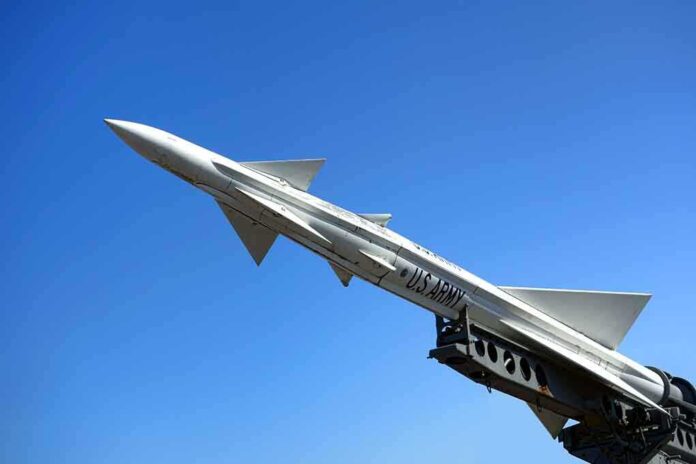
A new missile development promises to bolster U.S. naval power, bringing renewed confidence among defense advocates.
Story Highlights
- Lockheed Martin unveils a new ramjet-powered anti-ship ballistic missile (ASBM) enhancing U.S. naval strike capabilities.
- This missile is designed to counter adversaries by engaging warships at long ranges with precision and survivability.
- It represents a significant technological advancement, aiming to penetrate advanced maritime defenses.
- The development is a strategic move to maintain U.S. maritime superiority amid rising global tensions.
Technological Leap in U.S. Naval Capabilities
In a significant stride towards enhancing U.S. naval capabilities, Lockheed Martin has unveiled a ramjet-powered anti-ship ballistic missile (ASBM) in 2025. This cutting-edge technology promises to engage and destroy enemy warships at unprecedented ranges. Utilizing high speed, maneuverability, and advanced guidance, the missile is designed to penetrate sophisticated maritime defenses, thereby strengthening America’s maritime power in an increasingly contested global arena.
The U.S. Navy’s Distributed Maritime Operations strategy, which emphasizes long-range and survivable strike weapons, benefits greatly from this innovation. The integration of ramjet propulsion into the missile system marks a pivotal evolution following the limitations of existing subsonic systems like the Long Range Anti-Ship Missile (LRASM). This technological leap is crucial in addressing the growing threats posed by adversaries such as China and Russia, who have advanced their naval capabilities significantly.
Strategic Implications and Stakeholders
The development of the ramjet-powered ASBM is not only a technological breakthrough but also a strategic necessity. Lockheed Martin, the lead developer, has worked closely with the U.S. Navy and the Department of Defense to ensure that this missile aligns with national defense goals. As the primary end-user, the Navy aims to bolster its deterrence posture and maintain maritime superiority amidst the rise of anti-access/area denial (A2/AD) systems deployed by potential adversaries. This development is a response to the threat posed by China’s DF-21D and DF-26 missiles, which have been a growing concern for U.S. carrier vulnerability.
Lockheed Martin’s established reputation as a trusted supplier to the Navy reinforces its leadership position in defense contracting. However, the stakes are high, with other defense contractors like Raytheon and Northrop Grumman eyeing similar opportunities. The Congressional defense committees play a pivotal role in budgetary approval, ensuring the effective use of defense funds to maintain U.S. military superiority.
Impact and Future Prospects
The introduction of this missile is poised to have significant short-term and long-term impacts. In the short term, it enhances U.S. deterrence, signaling technological progress to both allies and adversaries. In the long term, this development could shift the naval power balance, prompting new countermeasure developments and influencing global arms race dynamics. For the defense industry, this heralds a new era of innovation and competition, spurring further research into advanced propulsion systems.
While the strategic benefits are clear, there are concerns about the missile’s cost, integration challenges, and the need for robust targeting data. Experts and analysts emphasize the importance of addressing these challenges to fully realize the missile’s potential. As development continues, the focus remains on ensuring that this cutting-edge technology effectively enhances U.S. maritime strike capabilities, thereby safeguarding national security and maintaining global stability.
Sources:
Lockheed Martin: Long Range Anti-Ship Missile (LRASM) Product Page


























